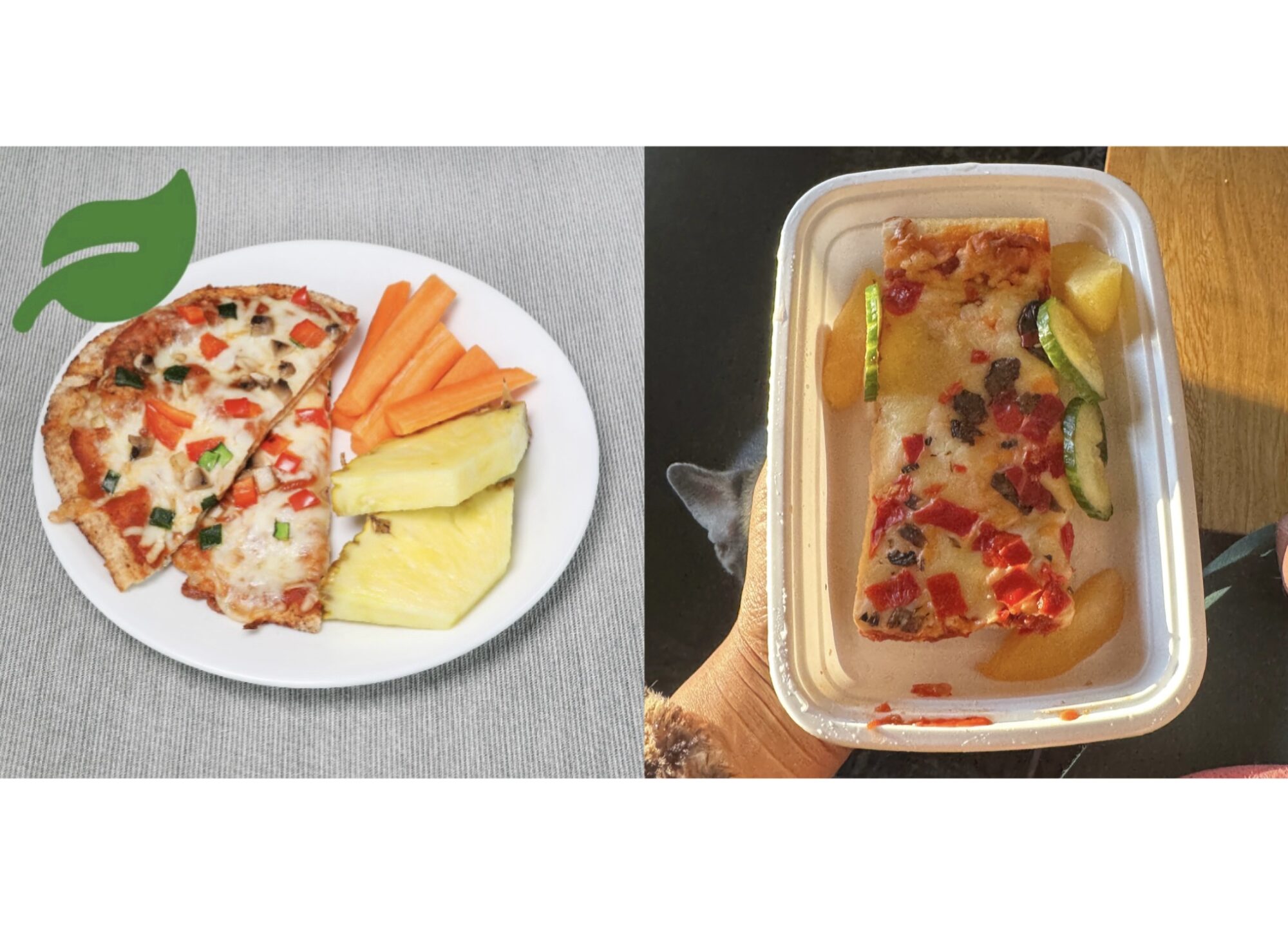New school lunch program a work in progress, parents say
Pay-what-you-can program receives mixed reviews on food quality

caption
Left: “Mini Veggie Pizza with Vegetables and Fruit” as advertised on the NS Lunch signup page. Right: The same meal, brought home from school uneaten.Nova Scotia’s new school lunch program is receiving mixed reviews from parents and their children.
Cheryl Hooper, a Halifax resident whose seven-year-old daughter participates in the program, says she is pleased the program launched.
“The fact that we’re able to have a program where kids who might not normally get a warm lunch, let alone a lunch, actually have the ability to have it for free every single day, I think is amazing,” said Hooper.
Hooper says her daughter is a picky eater, and “the only thing she ever complains about is she doesn’t like what it is, but not the quality of what it is.”
She added, “I do think that there’s some kinks that need to be worked out for sure.”
The Department of Education launched the Nova Scotia School Lunch Program in October with the intention of providing kids with nutritious meals regardless of their parents’ ability to pay.
The program currently serves 255 schools across the province, including 92 in the Halifax Regional Municipality, and will grow to include all public schools in the province. It is pay-what-you-can, allowing parents to confidentially pay the full price of $6.50, a smaller amount, or nothing.
Schools prepare or receive the food differently. Either school staff make the lunches in the school, an outside company makes lunches in the school or an outside company makes and delivers lunches. According to the Department of Education, “the program model does not affect the menu options, ordering process or quality of lunches.”
Some parents haven’t been impressed with the meal quality.
“My kids do not like it,” said Allie White, a Halifax resident who has three children participating in the program. She said after trying the school lunches for a month, her family will no longer participate. She said her kids have come home with uneaten food, which has been wasteful.
Sometimes White tastes the food they bring home, and said she was unimpressed by a recent pasta meal.
“There was no sauce, it just looked like noodles and tomato chunks . . . I wouldn’t eat that.”
White said just because the program serves some children who would otherwise have nothing to eat, that doesn’t mean the food shouldn’t be held to a higher standard.
“Imagine knowing that you have no food at home, or you know, you’re not going to have a good supper at home,” said White. “And that you’re looking forward to this meal that you’re going to get at school. And that’s when you get dry noodles with chunks of tomatoes.”
Halifax resident Zina Davidson said although her three kids have enjoyed participating in other school lunch programs, they have not been tempted to try this one.
“One of my daughters described the salad as wilted and just overall unappealing,” said Davidson. “Not one of the three has asked me to sign them up.”
Other families have had positive experiences.
Halifax resident Karen Lindsay, who has two children in elementary school aged 7 and 10, said she always asks them “How was lunch?” and “almost every day,” they respond with “It was so good.”
She also said that the diversity of the program’s meals means her kids are trying and enjoying new foods.
“We have actually expanded our dinner menu because of the lunch program,” said Lindsay.
However, Lindsay is among multiple parents who expressed concerns about the nutritional value.
“They’re getting like two slices of cucumbers, or two little pieces of pineapple,” said Lindsay. “The vegetable or fruit that comes with it is significantly less than it should be. It’s not a serving.”
Halifax resident Chiara Streatch says the program needs to be more inclusive to children with allergies.
Her five-year-old daughter, who has a severe anaphylactic reaction to eggs, can’t participate in the program because the ordering website doesn’t list ingredients in items like pasta and bread.
Streatch reached out in October to her school’s principal, who then forwarded her email to the Halifax Regional Centre for Education. She received a response the next day saying the provincial team had been alerted, but said this week she hasn’t heard back.
Still, most parents say the program is a good thing.
“For me, packing their lunches was such a stressor,” said Lindsay. “I’m taking advantage of the program because it makes a big difference in getting the kids ready for school.”
The province announced the new school lunch program in February, which will cost $18.8 million for the 2024-25 school year. The program will roll out over four years and build to an estimated $100 million annual cost by 2027–28.
Correction:
About the author

Indra Egan
Originally from Northern BC, Indra Egan is a Bachelor of Journalism student at King's. She has a M.Mus. in Collaborative Piano from the University...
